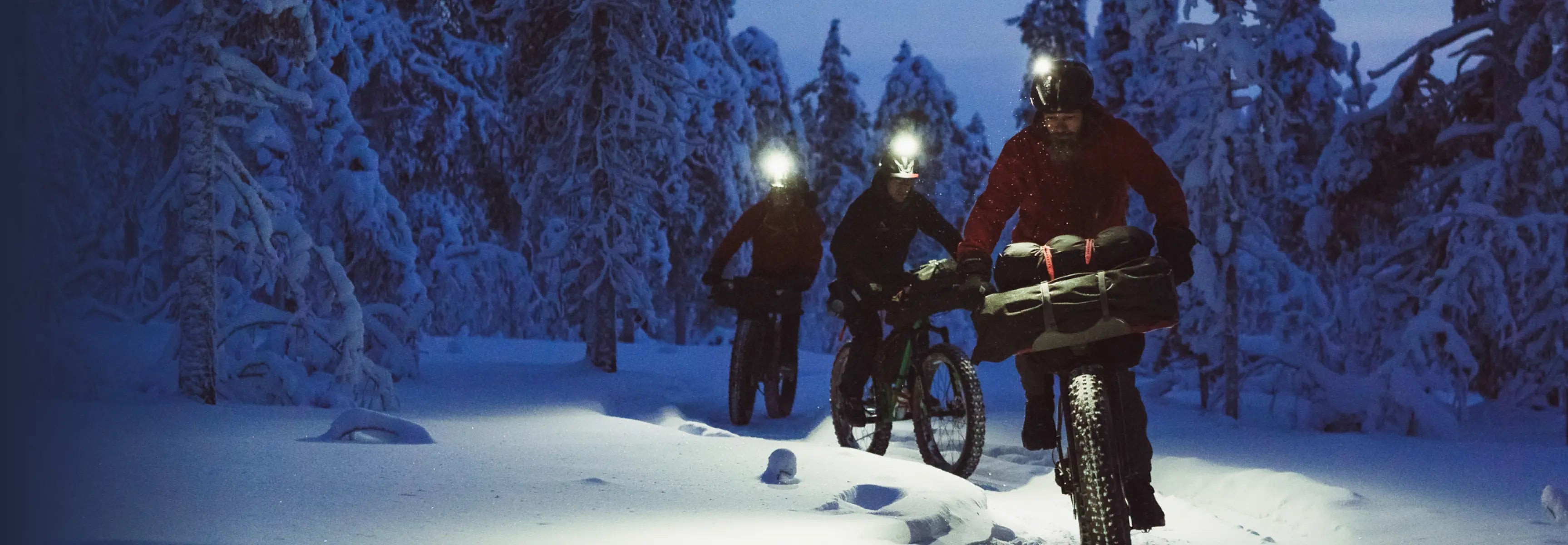
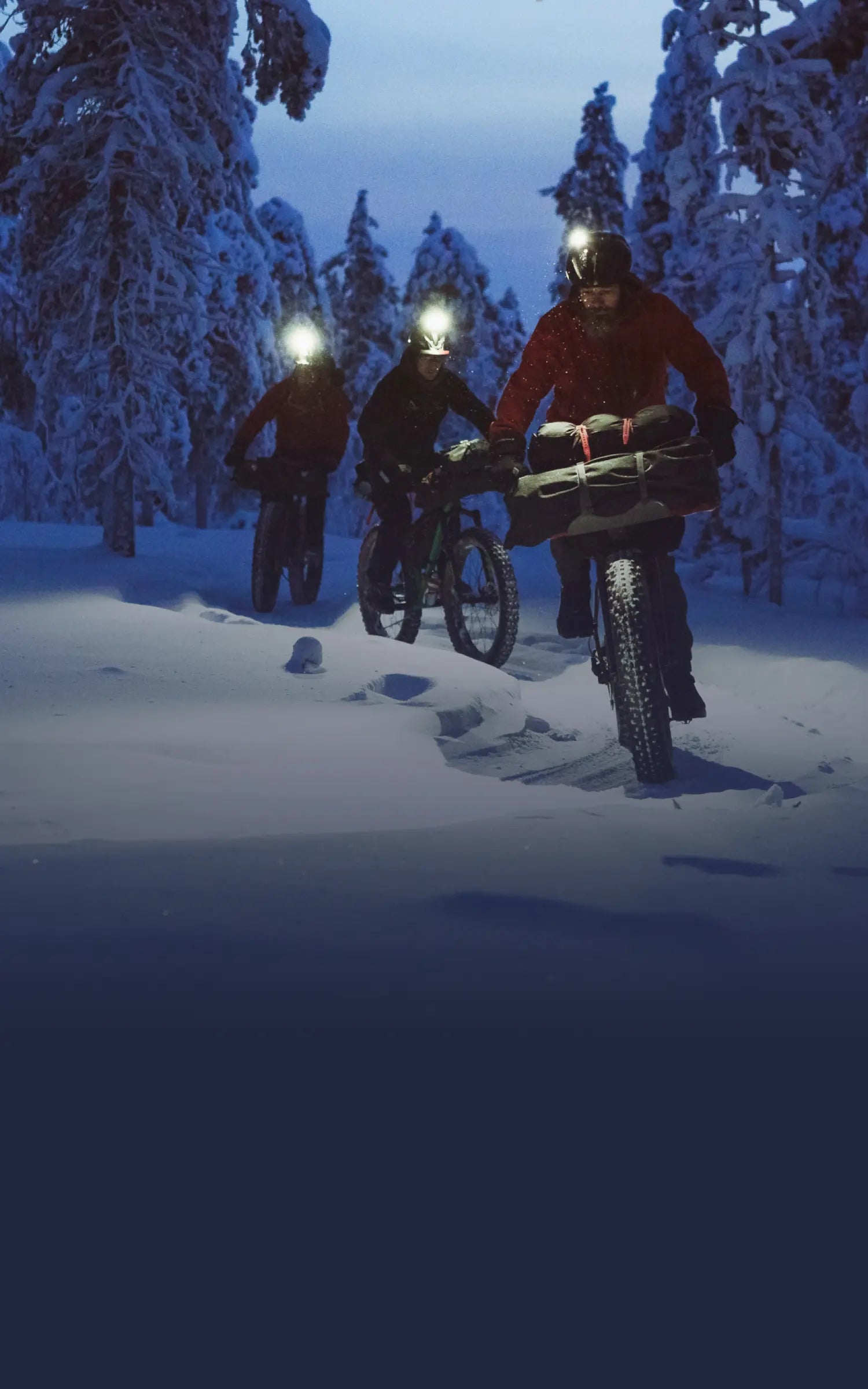
Suunto Blog
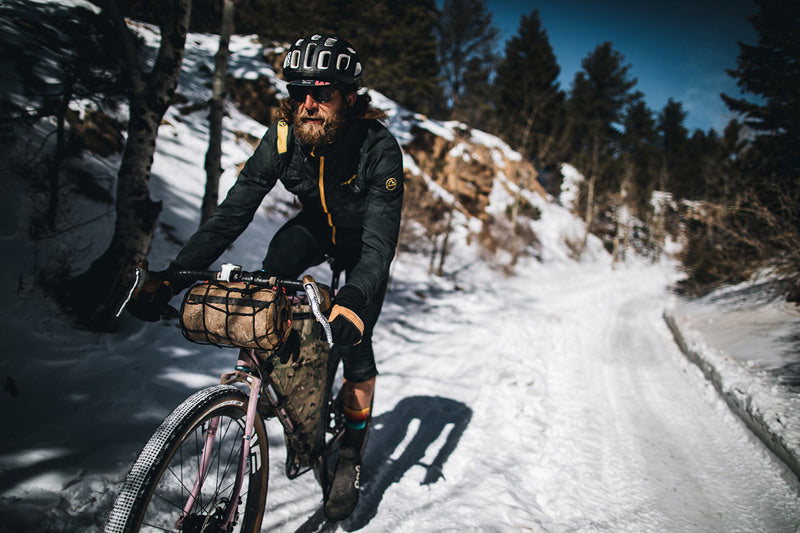
Anton Krupicka - Human powered, doorstep to doorstep
Once a pure runner, who won ultra races across the US, an injury in 2011 transformed Anton Krupicka into a passionate multisport athlete who thrives on human powered adventure.
“There is something special and empowering about doing everything yourself – not relying on a motor vehicle – and as a multi-sport athlete, I love combining sports into one big outing,” Anton says. “For instance, riding my bike to climb at the local crag, or riding my bike on a tour to link up a series of mountains on foot, or even riding my bike from my doorstep to climb and ski a local mountain. I like the logistical challenge and the need to refine my systems to be as functional and simple as possible.”
Anton’s passion for mixed sport adventure hasn’t diminished his love of racing, however. “Pushing your hardest is such a unique life experience, and I find that I’m only able to do that in a race environment,” he says. “Competition, at its essence, is everyone working together towards a common goal to bring out the best in each other. It’s a beautiful, painful, connecting experience. When it goes well, there’s euphoria. When it doesn’t go well, there is an unparalleled opportunity for learning and growth. I think racing is so valuable, no matter where you finish in the results. As such, I hope to do it my whole life.”
Anton, now 37, began racing early in life. Originally hailing from Nebraska, he became a runner at 11, and 18 months later ran his first marathon. The thrill of pushing his limits led from one challenge to another, and 10 years later he ran his first ultra marathon, the Leadville 100, and the experience changed his life. “It gave me a fundamental confidence I could do anything if I tried hard enough,” Anton says.
In 2011, at the height of his ultra powers, Anton broke his leg while running, putting his career on hold. But it was a blessing in disguise because it gave him the time and inspiration to explore sports he hadn’t had the opportunity to try before – climbing, cycling and skiing. “I never had the confidence to pursue these other sports when I was younger,” Anton says. “Now, for the past 10 years, I would say I have been as enthusiastic a climber as I am a runner (though not as successful, of course!), and for the last six years I’ve also devoted a lot of time to cycling and skiing, depending on if it’s summer or winter. These have grown to become as important and indispensable to me as an athlete and a human as running has been for the past 26 years.”
Now based in Boulder, Colorado, Anton is always cooking up new adventures. His favorite usually involves mixing cycling with mountaineering. He enjoys cycling from mountain to mountain and climbing them on foot. With his love of pushing hard, bikepacking races are also on the cards in the near future. “My ideal adventure probably has some element of speed included in it, I don’t think records are necessarily interesting in and of themselves. However, I do think trying your hardest puts a unique demand on you and shapes the experience in a positive way. Trying to go fast demands that you are focused and skilled and it puts me in a mindset I find very enjoyable and an enormous privilege. Trying my best – pushing towards my personal limits – is the best way for me to grow and learn new things. There has to be some chance of failure and challenge for growth to occur.”
Whatever Anton does, trail running, bikepacking, mountaineering, skiing, he keeps meticulous training logs, and has been doing so since 1995. He’s been using Suunto watches since 2015, which he says are fundamental to his athletic life. He started with a Suunto Core, switched to an Ambit3 Peak, and now uses a Suunto 9 Baro. “I use my Suunto 9 to take splits on regular training routes, check the altitude and elevation gain, track distance, and with the advanced GPS technology available now I even use it for navigation in unknown terrain. I always have my Suunto with me!”
All images by Joey Schusler
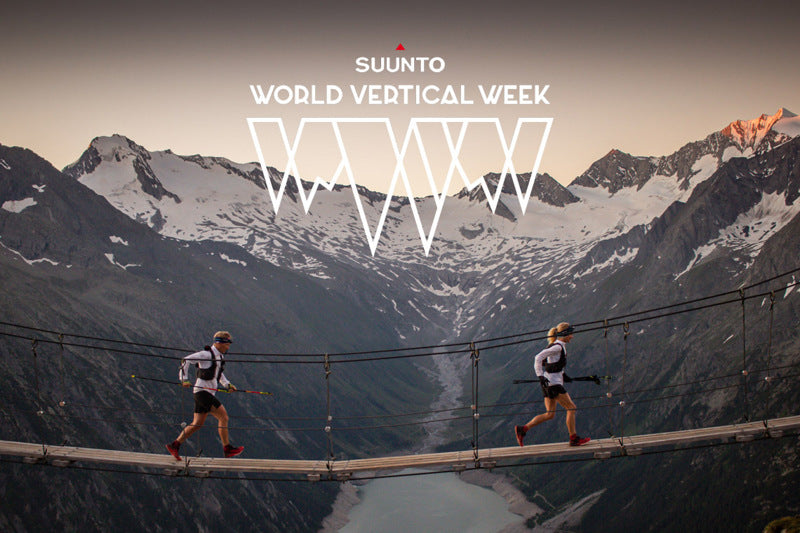
And the World Vertical Week 2021 winners are...
After a very complicated and challenging year, 2021 was perhaps one of Suunto’s most special editions of World Vertical Week. The results show how much athletes from every corner of the globe want to push themselves in the outdoors – the number of participants more than tripled to over 48,000 athletes joining the challenge in search of vertical glory this year.
The reigning champ
Austria has done it again: it’s the country with the highest average climb per activity, 421 m. The country of music and mountains has again retained the position that it’s accustomed to, number one, which it has held in four of the last five years. It only lost its crown in 2019, falling to fifth place. Austria is followed by Slovenia (2nd, 401 m), Italy (3rd, 378 m), Switzerland (4th, 348 m), and France (5th, 292 m). These nations have regularly featured in the World Vertical Week top 10. Special mention goes to Hong Kong athletes, with their 254 m average, taking eighth place.
Austria 421 m
Slovenia 401 m
Italy 378 m
Switzerland 348 m
France 292 m
Slovakia 280 m
Spain 275 m
Hong Kong 254 m
Norway 239 m
Canada 233 m
Spain, France and Italy always consistent
Add, add, add. Based on many diverse efforts, Spanish athletes made Spain the nation with the most climbed meters overall. Spain has snatched back the title, which landed in French hands last year. Italy comes in as third again. Suunto has been providing total data by country for three years, and these three countries have had a place on the podium each time.
Spain
France
Italy
Austria
Germany
Don't say vertical climb, say skimo
Once again, ski touring looms large as the sport with the most vertical meters clocked: up to 960 m on average per activity. And its companions also repeated on the podium: mountaineering (628 m) and trail running (434 m). The average accumulated climb in each sport increases year after year, but these three disciplines remain top dogs.
Ski touring 960 m
Mountaineering 628 m
Mountain biking 378 m
Trekking and hiking 241 m
Cycling 198 m
Nordic skiing 173 m
Running 92 m
10,000 m... in one week!
Each year, Suunto World Vertical Week generates unique stories of athletes who go above and beyond, surprising and inspiring the entire community. This time, the efforts of nine athletes stands out. Faced with an invitation to tally vertical meters, they managed to accumulate more than 10,000 meters in one week. That’s brutal!
In addition, 89 were able to tally 10,000 feet – or 3,500 meters – during a single activity! 1,000 meters of total ascent during an activity was broken 4,240 times during the week. Respect!
Top nations by sport
Italy is multiskilled
The transalpine country is ranked in third place for collecting the most average and overall vertical climb meters, and in addition it leads the mountain biking ranking and is among the top three countries in three more categories: ski touring, mountaineering and cycling. Italy is present in six of the seven classifications by discipline. Bravo!
Ski touring (avg. ascent by country)
Over 1,000 meters on average? Why not? The first four countries in the ranking, Germany, Italy, Switzerland and Austria, are all above the 1000 meter mark this year. The ranking offers surprises and changes compared to 2020, perhaps due to the constraints and limitations arising from the pandemic. Germany deserves special mention; last year it didn't make the top 5 and in 2021 it is on top! Spain, on the other hand, was first in 2020, but has disappeared from the 2021 top 10.
Germany 1076 m
Italy 1050 m
Switzerland 1043.3 m
Austria 1042.9 m
United States 957 m
France 940 m
Slovakia 927 m
Slovenia 926 m
Poland 876 m
Japan 844 m
Trail running (avg. ascent by country)
For years, Japan and Hong Kong have reflected the passion trail running inspires in Asia: they captured the top positions here once again, accompanied this time by Slovenia.
Japan 839 m
Hong Kong 628 m
Slovenia 626 m
Italy 594 m
Norway 502 m
Hungary 486 m
Portugal 485 m
Spain 476 m
Switzerland 472 m
Greece 464 m
Mountaineering / avg. ascent by country
Switzerland returns to the top five and comes out on top, showing that it is passionate about seeing the world from way up high. It is accompanied by Italy, France, Germany and Austria... forming a classification dominated by Central Europe, the territory of the Alps and high mountains.
Switzerland 1019 m
Italy 993 m
France 856 m
Germany 755 m
Austria 688 m
Mountain biking (avg. ascent by country)
Italy is synonymous with variety, but according to data from the Suunto World Vertical Week it tallied the most vertical meters of all on two wheels. There are few changes from 2020, with the main one being that Slovenia has entered the top 5.
Italy 547 m
Spain 475 m
Austria 473 m
Slovenia 471 m
Switzerland 440 m
Trekking and hiking (avg. ascent by country)
Thai athletes racked up the most vertical meters in trail running last year. This time, it would seem they have chosen to continue, only at a different pace.
Thailand 567 m
Japan 503 m
Slovenia 411 m
Italy 399 m
Slovakia 396 m
Cycling (avg. ascent by country)
It seems like climbing mountain passes by road bike in Portugal is close to becoming a tradition. The country won top position once again, and Colombia returns to the ranking after last year’s absence.
Portugal 432 m
Colombia 383 m
Italy 382 m
Spain 340 m
Greece 271 m
Running (avg. ascent by country)
Traditionally this is one of the closest categories, with just a few meters of difference separating countries. This time Slovenia, which regained the top position that it had back in 2018, has pulled away a little.
Slovenia 196 m
Norway 164 m
Switzerland 150 m
Hungary 143 m
France 129 m
Thank you to everyone for participating in Suunto World Vertical Week 2021. We’ll be back with another edition of Vertical Week!
READ ALSO
Three inspiring World Vertical Week moments
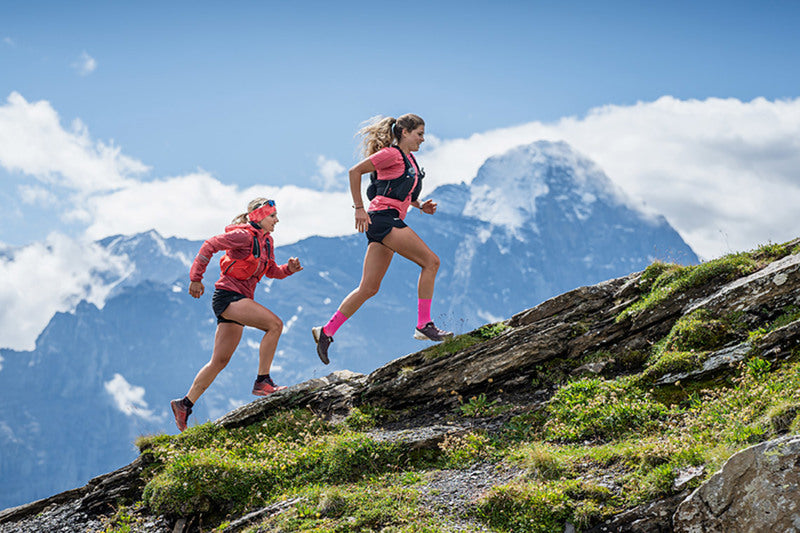
Three inspiring Vertical Week 2021 moments
Going crazy
Every year we receive feedback that vertical challenges are hard in flat countries. We can fully relate to that as here in Southern Finland the hills are also small. But every year there are also impressive and inspiring performances that show how creativity and determination can take you a long way also when you want to gain vertical meters.
One of these people was Adrien from Grenoble, France. He decided to climb up and down a staircase to reach 1000 vertical meters. After running 79 times up and down the staircase – that’s 316 floors all together – he reached his goal.
“Next time I’ll do something smarter – and outdoors that time,” Adrien commented in his post.
Keeping it consistent
Paulina from Finland proved that consistency is the key to success: she headed out every day during the Vertical Week and was very committed. The result was seven back-to-back 1000 m days, a great training block and certainly some unforgettable memories.
”A friend of mine has challenged me to join monthly “Thousand Meter Tuesdays” and Vertical Week was perfect for that!”, says Paulina who ran up and down Puijo in Kuopio, Finland, while her fiancée joined the challenge on skis.
“I knew I would be able collect the needed vertical meters even though there certainly were some challenging moments, too.”
Soaking up the views
The Vertical Week is not only about the hard, physical efforts and hill repeats. When you reach the summit, ridge or a col there’s often the reward of wide-open views. That’s what inspired us with Ben’s Vertical Week shot from the Nelson Lakes National Park in New Zealand.
“This was one of those days where all you need to do is soak up the views and appreciate what's in front of you,” Ben says. We couldn’t agree more!
Thank you to all of you for sharing your World Vertical Week experience on Instagram and inspiring us all. Congratulations Adrien, Paulina and Ben. You are the winners of the World Vertical Week contest in 2021. All three of you will receive Suunto 9 Baro watches to join you on your future adventures!
READ ALSO
More desire than ever to tally up vertical meters: World Vertical Week 2021 big data is here
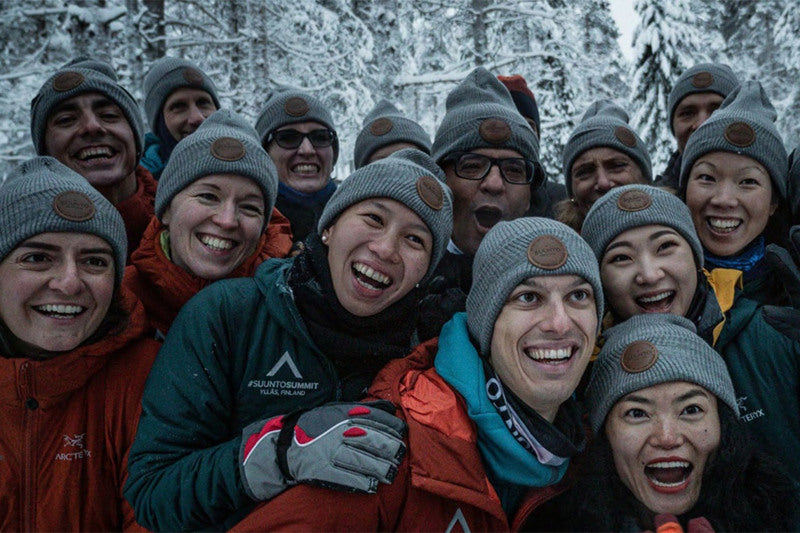
A sense of community
We are talking about you, and your stories.
We feel as though we have gotten to know our community better than we ever have before. We read about how you are managing through the past year with a world turned upside down and trying to maintain your health (and sanity).
You told us about your achievements and your future dreams of adventure. We are inspired by what you have accomplished and the resolve in your path ahead whether to better health, faster races or new heights of exploration.
You took time to share with us your past experiences, and the joy found in peaceful treks through the wilderness and stressful, challenging summit pushes. Some of you shared very personal moments, experiences that have shaped your lives, both heart wrenching and hopeful.
We are honoured to have been there with you for some of those memorable moments, even at times providing critical information to get you home safely, or to help keep you motivated and pushing towards a personal goal, or a personal mission.
These stories are why we exist, and reading them reaffirms our mission and commitment to enabling them. Thank you for sharing them with us, we are grateful and inspired.
– Your fellow adventurers at Suunto
Next Steps in the application process and program:
We wanted to share that we are reading them (all) and due to the sheer amount we are going to take the following steps to ensure we a). Can kick-off the program in good time and get a first group of selected ambassadors going, b). Ensure we communicate in the most timely manner possible. So this is how we will roll from here:
We have begun to communicate to our first selected brand ambassadors and as well as those applications we’ve read through that are not a match at this time.
If you have not been communicated with, your application is still being reviewed.
We are closing the application page for now effective March 11 to ensure we can handle all the applications with care.
We will inform all applicants until this point by April of their status.
A couple of notes to help you application in the future.
Please create a ‘creator’ or ‘business’ account on Instagram (if you are on the platform), it helps us get to know you better, faster.
We will inform you about the next application round on suunto.com, our newsletters and our social channels. Stay tuned!
Tell us about you and your adventures with your Suunto! Your stories are a key reason we have made the selections we have, so keep them coming!
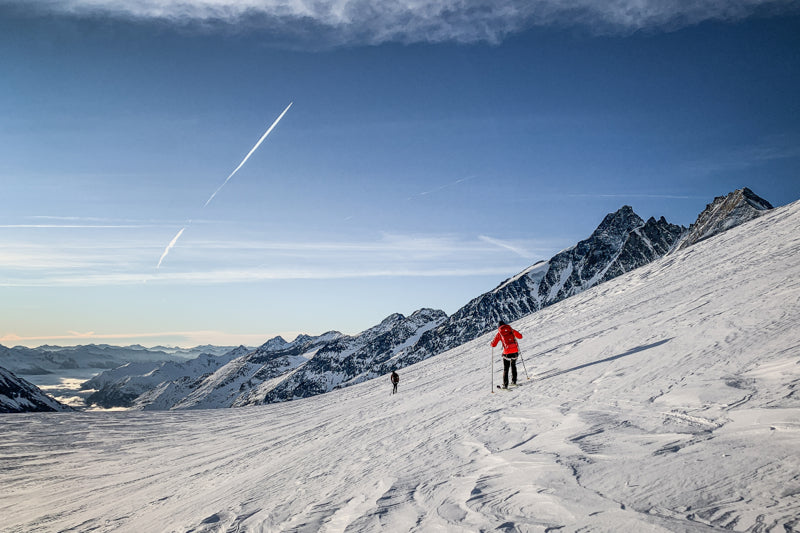
This is what vertical power looks like
For ordinary mortals, completing the Hoch Tyrol ski route – with 10,000 m of ascent over 100 km – usually takes six days. The alpine route runs from Kasern, South Tyrol and proceeds from hut to hut, crossing Grossglockner ( 3798 m), Austria’s highest mountain, before finishing in Kals am Grossglockner. Often exposed, with steep climbs, and technical skills required, it’s not for the faint hearted.
Suunto ambassadors and mountain athletes Francois D’Haene and Philipp Reiter didn’t have six days. So they decided to complete the epic alpine crossing in one push, on one day. This is what having vertical power provides – epic adventures in a single day.
Click here to learn how to improve your vertical speed!
© Martina Valmassoi
Setting out, the weather didn’t play nice, and they found themselves skiing down a couloir in poor visibility. Their Suunto 9 watches allowed them to safely navigate the white out. The crossing demanded more calories than they anticipated so they ordered big plates of pasta at one of the huts. As they continued, the weather cleared, and they enjoyed some stunning descents. By the time night fell, their tanks were nearly empty, but somehow they reached the end.
"I was never as destroyed as when I was fighting my way up to the final peak, Grossglockner," Philipp Reiter says. "I tried to convince my body to keep walking but every 30 steps it just stopped for a few moments before I could push on again. It was a mix of all the pre-planning stress, not enough sleep and physical exhaustion from almost 10.000m+. When we finally reached the summit it was just overwhelming feelings - so happy to have completed our project!"
Hit play below to watch their big day out!
Lead images: © Philipp Reiter
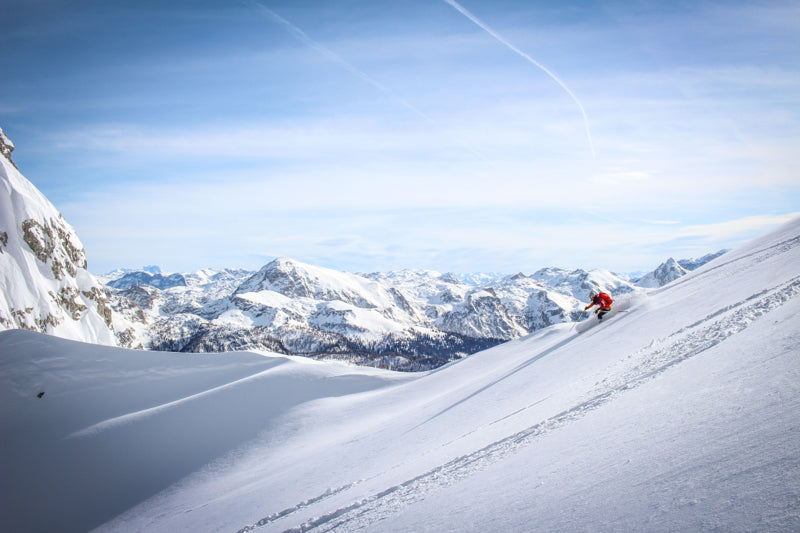
6 tips for faster skimo
Sports scientist, coach and blogger Susi Kraft grew up in the Austrian Alps and fell in love with ski mountaineering early. Her dad was her first skiing coach, and since studying sports science at university she’s been fascinated by how to train to get faster.
“Being faster makes it more fun, means you can climb more mountains, and gives you more options,” Susi says. “It also means you have safer conditions, lower avalanche risk, if you head out in the early morning and are fast enough to get back before midday when it usually gets warmer and changes the snowpack. Being faster also makes it possible to climb high mountains in one push – without the need to sleep in a hut.”
Every opportunity, Susi is out in the mountains around Salzburg.
The most beautiful and demanding
Susi is one half of the popular German language skimo blog Berghasen, which covers gear, training to tips, and awesome tours in the Alps. She coaches everything from trail runners and triathletes through to ski mountaineers. Getting faster at skimo is one of the most challenging things to achieve because it’s such a demanding sport.
“There are so many factors,” she says. “Endurance, technique for uphill and downhill, the environment, snow, mountains, cold, avalanche risk, fuelling, what to drink, and safety. The sport demands a lot of experience in advance. There are a lot of factors to staying safe and getting better. That’s why for me it’s the most beautiful sport, but one of the hardest to achieve the next level.”
Read on for Susi’s six tips to improve your uphill skimo speed.
Follow the 80/20 rule
“With skimo it’s really hard to train carefully because as soon as you go uphill your heart rate peaks,” Susi says. “It’s easy to slip into high intensity training and then over time your improvements will start to plateau. Also, having to carry much more gear in comparison to other sports such as trail running makes it really hard to train at lower intensity.”
Skiing and avalanche equipment, a backpack with food and drink, ski clothing and helmet all add up the weight to make the sport demand more strength and power, and to make it tough, especially for beginners, to keep the heart rate down.
Susi recommends following the polarised training model propounded by sports scientist Dr. Stephen Seiler. This is based on Seiler’s research that found the best endurance athletes do most of their training at low intensity. It suggests 80 % of training should be done at low intensity, and only 20 % at high intensity.
A key factor in getting a feeling about your training intensity is knowing your maximum heart rate. It can be determined by doing a lactate performance diagnostic test on a treadmill or bicycle ergometer. Your heart rate is the easiest way to monitor your training intensity and can be used in most sports. If you already know your maximum heart rate you can follow these training suggestions:
Train at least 80 % of the training at low intensity – about 70 % of your maximum heart rateMaximum 20 % of your training volume should be high intensity – about 80 to 100 % of your maximum heart rate
To sum it up, follow this rule: do a lot of training in your comfort zone with low heart rate and a little bit of your training at really high intensity with your heart rate close to your maximum.
Reduce weight
As we mentioned before, skimo involves a lot of gear, and the weight of all that gear and provisions slows you down or increases your heart rate. Looking for ways to cut that down is essential. Susi recommends investing in lighter skis and ski boots as a start, and then looking into what other lighter weight gear you can find.
“If you really reduce weight you will notice your heart rate doesn’t get as high,” Susi says. “You will be able to do longer and more demanding climbs and you won’t get fatigued so quickly. Your recovery time after a long skimo day will also be less if your training session isn’t that intense.”
Embrace the flat
To help avoid slipping into high intensity training tours, look for maps and routes that don’t have so much elevation gain and avoid steep uphills.
“Look for terrain with just moderate steepness,” Susi says. “It will help to keep your heart rate down. Try to keep the inclination as low as possible, and use it as a warm up. Then keep some capacity for the last part of the mountain.”
Another option for low intensity training is doing some of your sessions on the bike outdoors or indoors on a bicycle ergometer. With biking it’s easier keeping the intensity low and the heart rate down than while running or ski mountaineering, Susi says.
Mix it up
If you’re having trouble keeping your heart rate in a low intensity zone on your tours, then mix it up and improve your base fitness by doing low intensity running in flat terrain and cycling. Remember, elite athletes like Kilian Jornet spent years working on their base. There are no shortcuts. Take your time and enjoy the process.
Build strength
Strength and core training are important for any sports, as they improve physical performance and are a key factor in preventing injuries like ruptures of ligaments in your knee.
“With more strength in your legs and core, uphill climbing will get easier,” Susi says. “Do two strength sessions a week with higher loads and don’t forget about core training!”
For building up muscles in your legs Susi recommends doing at least three sets of eight to 12 repetitions of:
box jumps
squats
lunges
leg press
deadlifts
hip thrusters
Beginners should do these exercises without additional weight. “The more experienced in strength training you get, the more additional weight you may use”, Susi says. Use barbells, kettlebells, dumbbells, weights plates or sandbags to intensify your strength training.
If you want to work on your core-stability and upper body d o exercises like push-ups, planking (frontal and side), good mornings, bridging or sit-ups. Check out Susi’s blog for more inspiration on core exercises. The articles are in German, but you can see the images here.
Do HIIT training
As mentioned, at least 80 % of your endurance training should be done at low intensity at around 70 % of your maximum heart rate. So what about the remaining 20 % of your training volume?
For athletes with a long history in low intensity training and for people with an excellent endurance base, high intensity interval training (HIIT) may improve your endurance even more.
“Just use a little bit to spice up your long and low intensity sessions, but don’t push it”, Susi cautions. “One or two sessions per week during the preparation for your competition or season highlight are totally fine.”
High intensity interval training is characterised by short and intense periods of exercise followed by less intense recovery periods where you continue the exercise with lower intensity. For example, running at maximum speed for one minute followed by easy running for one minute, and repeating this 15 times.
“As high intensity interval training is really intense the sessions usually have a shorter duration compared to ordinary and low intensity endurance training,” Susi says. “Keeping it to 25 to 40 minutes of hard intervals is totally fine.”
Follow one these HIIT regimens for skimo:
30 x 30 seconds at maximum intensity followed by 30 seconds of active rest at low intensity15 x 1 minutes intervals at maximum intensity followed by 1 minute of active rest8 x 3 minutes intervals at high intensity followed by 3 minutes of active rest (low intensity)5 x 4 minutes intervals at high intensity followed by 3 minutes of active rest4 x 5 minutes at high intensity followed by 5 minutes at low intensity3 x 8 minutes at high intensity followed by 5 minutes at low intensity
Note: start your HIIT with a 10 minutes warm-up and a 10 minutes cool down at low intensity. The day after a high intensity session you should schedule a rest day or an easy recovery session.
All images: © www.berhasen.com










































































